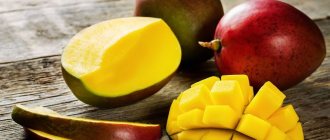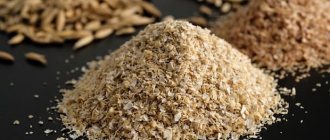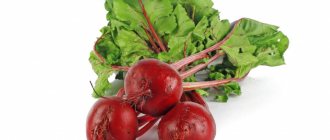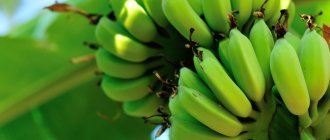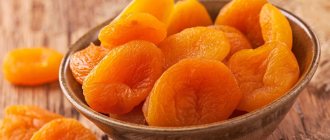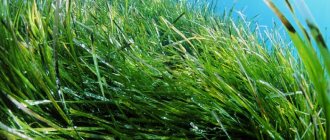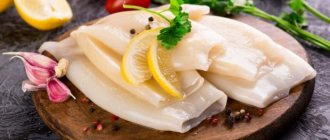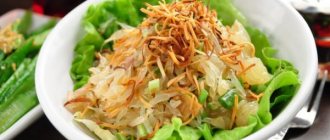What is Mineola
Mineola is one of the most common varieties of the tangelo fruit, a hybrid of tangerine (a type of mandarin) and grapefruit. It is grown by crossing Dancy mandarin and Duncan grapefruit.
Externally, the Mineola fruit resembles a tangerine, but unlike it, Mineola is slightly elongated along the axis and has a larger size. The average size of the fruit is about 8-8.5 cm in width and 7.5 cm in height.
There is another difference between tangerine and mineola - the color and structure of the peel. Mineola's rind is strong, but also thin and easily peeled, colored a bright red-orange color.
In addition, the mixture of grapefruit and tangerine has a dome-shaped thickening at the top in the form of a bell up to 1.5 cm in size.
To make the description even more detailed, it is worth noting that inside the fruit there are from 10 to 12 segments with yellow-orange juicy pulp. One fruit can contain 7-12 seeds.
Strawberry guava
Malcolm Manners on Flickr.com
wikipedia.org
wikipedia.org
wikimedia.org
wikipedia.org
pixabay.com
Strawberry guava (also known as Kettley guava , strawberry guava , cherry guava ) is a small, evergreen, slow-growing tree, 2–4 meters tall. The homeland of strawberry guava is Eastern Brazil. It is also cultivated on a limited scale in other countries of Central and South America, in Florida, Southern California, the Antilles, the Bahamas and Bermuda. It is also cultivated in Africa, India, Malaysia, Sri Lanka and the Philippines.
Strawberry guava fruits are round, 2.5–4 cm in diameter, with a thin skin of dark red, purple-red or lemon yellow. The flesh of red fruits is white, slightly reddish near the skin, while that of yellow fruits is yellowish. In both types of fruits, the pulp is juicy, translucent and has a strawberry aroma. Contains vitamins A and B.
The fruits are consumed fresh and used to produce jams, jellies, sorbets, juices and alcoholic beverages.
Where and how does it grow
The annual Mineola harvest in Florida continues to be harvested today. This is facilitated by the fertile soils and warm climate of the state. In addition to the USA, this hybrid is grown in China, Israel and Turkey, and in much larger volumes than in its historical homeland.
The Mineola tree is considered a subtropical evergreen bushy plant with an extensive crown and heavy, bright fruits. Under favorable conditions, it grows quite quickly and can reach a height of 5 meters. If you wish, you can grow a tangerine hybrid, including its variegated varieties, at home. In this case, the tree’s growth will reach 1.5-2 meters.
Mineola has long, dense, deep green leaves with pointed edges. During the flowering period, small white flowers bloom on the branches, completely covering the tree and filling the air around with a pleasant milky aroma. This citrus does not need pollinating assistants, but to achieve larger fruits, farmers use a technique such as tying inflorescences.
The fruits ripen late, but are stored for a long time and tolerate long-term transportation well. If you do not harvest from the tree in time, next year the fruit will be born with a more faded skin.
How to grow at home
Citrus plants take root well at home. In order to grow mineola at home, you need to take a good, ripe fruit and extract the seeds from it. They are planted immediately before they dry out. The soil needs to be loose, with a lot of humus and the addition of sand. The grains are deepened by 10 mm. The soil is moistened and covered with film. It is not removed until the sprouts appear.
The pot is placed in a well-lit place, but without direct sunlight. The temperature in the room should be 23-25 degrees. The soil must be periodically moistened and ventilated to prevent mold from appearing. Sprouts will appear after about one month. After 3-4 leaves are formed on them, they are transplanted into a larger container. To create comfortable conditions for an adult plant, it is necessary that the room temperature in summer and spring does not drop to less than 19 degrees. And in the autumn-winter season it should be reduced to 18 degrees. This is the dormant period when the plant rests.
Tropical trees are moisture-loving, so you need to make sure that the soil does not dry out. For irrigation, filtered water at room temperature is used. Water the plant at the root when the sprouts are small; this must be done very carefully. An important indicator for good tree growth is air humidity. If the room is very dry, the plant may dry out and die. Therefore, in winter, when the heating is on, it must be placed in a room with high humidity levels. The leaves are regularly sprayed with a spray bottle.
In order for the plant to bear fruit, it is fed with mineral fertilizers. There are ready-made mixtures for citrus fruits in stores. You need to fertilize from the beginning of spring to the end of autumn 1-2 times a month. Since the plant is an evergreen, yellowing or falling foliage indicates problems. The tree may begin to lose leaves due to lack of moisture and light. Another cause is a lack of potassium in the fertilizer. If there is a nitrogen deficiency or the container is too small, the leaves turn yellow.
The appearance of a tree with bright orange fruits in your apartment is a real positive! Mineola fruits will bring joy all year round, especially during the dull winter months.
Mineola tastes
The sweet and sour pulp of Mineola is similar to other hybrid citrus fruits, such as the clementine (a mixture of orange and tangerine) from Morocco or Spain, but has its own distinctive characteristics. It tastes juicier, and due to the thinner milky skin between the slices than grapefruits and tangerines, it literally melts in your mouth.
The aroma of Mineola tangerine combines orange, tangerine and grapefruit notes.
Recipes with Mineola
Knowing what mineola is, you will probably want to get to know the fruits better. Well, after eating your fill of juicy pulp, don’t miss the opportunity to enjoy desserts that use citrus in their preparation.
Pie "Citrus Boom"
To prepare the pie you will need:
- 1 tbsp. Sahara;
- 1 tbsp. flour;
- 4 eggs;
- mineola – 2 pcs.
Mineola needs to be washed, then grated with a fine grater. The remaining skin is peeled off, and the slices are cut with a knife, removing the films from them.
Beat the eggs with granulated sugar until a dense foam forms and the sugar crystals are completely dissolved (about 10 minutes). Next, add the sifted flour to the egg mixture and mix the dough thoroughly. It will turn out viscous and moderately liquid, the consistency is approximately the same as fermented baked milk. The next step is to add the Mineola zest and fruit pieces. The dough is poured into a greased form and the pie is placed in a preheated oven for 30 - 35 minutes. Check readiness with a wooden skewer.
Dessert made from maniola and soft cottage cheese “5-minute”
The name of the dessert is “telling”, because this is a recipe that requires only 5 minutes of time. It is prepared in a glass or bowl and consists of 3 layers: mignola fruit puree, biscuit cubes, and curd cream. To prepare the biscuit you need to mix:
- 1 egg;
- 2 tablespoons sour cream;
- 3 tablespoons flour;
- vanillin;
- baking powder;
- 2 teaspoons sugar.
The dough is poured into a cup or other small container with high sides and placed in the microwave for 2 - 2.5 minutes at maximum power. The cake will rise first and then fall. The finished cake is taken out of the cup and cut into small pieces.
To prepare the cream, mix soft cottage cheese and honey. The last step is to prepare the citrus puree. To do this, the mineola is cleaned and blended in a blender. The dessert is assembled in a bowl, alternating layers.
Mineola is an interesting and tasty fruit. It is good for both adults and children to eat, but it is important to remember that everything is good in moderation. You should eat no more than 3 fruits per day, and for children it is better to limit themselves to 1 – 2 citrus fruits.
Composition, nutritional value, calorie content
Despite the presence of sugar in its composition, according to the ratio of BJU, mineol is considered a dietary product. In moderation, this product is allowed during weight loss diets.
Nutritional value per 100 grams is determined from the following indicators:
- Proteins – 0.5 grams;
- Fats – practically absent;
- Carbohydrates – 9-11 grams;
- Water – 84 grams;
- Calorie content – 40-44 kcal.
Taking into account the fact that the average weight of one fruit is 200-300 grams, when eaten, a person receives about 100 calories.
The vitamin and mineral composition of this citrus is quite rich. 100 grams of pulp contains up to 80% of a person’s daily need for folic acid. Other beneficial components of the fruit are carotene, lutein, B vitamins, xanthine, ascorbic acid, peptin, flavonoids, as well as calcium, iron and potassium.
Healing properties of the fruit
Graviola fruits are often used in cooking, as they contain a lot of nutrients. For example, vitamins such as C and all B groups (B1, B6, B9, B12), and minerals: calcium, iron, phosphorus and magnesium. In addition, it is high in protein, carbohydrates and folic acid.
Thanks to this composition, sausep is used in folk medicine to treat the following diseases:
Properties of suasep
- normalization of intestinal flora
- for pathology of the colon
- helps with liver problems
- struggles with excess weight
- stabilizes acidity, pancreas and stomach function
- promotes proper removal of uric acid from the body
- treats neurological diseases, scoliosis and degenerative curvatures of the spine
In recent studies, doctors have come to the conclusion that guanabana contains a substance that fights cancer, but this has not yet been practically proven. The fruit actually kills foreign cells, but only in a certain environment, and on an individual basis. But diabetes mellitus can definitely be cured if you take the fruits according to a certain scheme and in the required quantity.
Based on guanabana, a drug was made that is prescribed to cancer patients. The purpose of the drug is to replace chemotherapy treatment for cancer patients and not expose the body to radiation. At the same time, the medication does not have a negative effect on other healthy organs.
The fruit extract has antiparasitic, antiviral, antimalarial and antifungal effects. Oil for the treatment of lice is made from the seeds of sausep.
As you can see, guanabana is quite useful and healing, but this does not mean that it should be consumed daily and excessively. Everything requires moderation.
Useful properties of mineola
The nutrients that make up citrus help a person actively resist negative environmental factors in a number of areas:
- prevention of vision problems;
- combating oxidative reactions in the body due to the effects of free radicals;
- minimizing the risk of seasonal diseases of viral and bacterial origin;
- cell protection and restoration;
- regulation of hormonal levels in women, improvement of fertility, support of the mother’s body during pregnancy;
- fight against lethargy and drowsiness.
What is the benefit
The composition of Mineola is no different from most citrus fruits. It traditionally has a high content of ascorbic acid for fruits of this type. The pulp of the fruit also contains a lot of folic acid (vitamin B9). Both of these elements enhance metabolism in the body, strengthen the immune system, and increase the activity of neuron cells. B9 promotes concentration and normalizes hormonal levels. It is necessary for pregnant girls for the normal development of the child.
It is also not news that citrus fruits are high in water, fructose and fiber. All these elements are useful for the digestive process and natural cleansing of the body. Water saturates cells with moisture and removes toxic substances. Fructose is a natural sugar substitute that is easily absorbed by the biological system. Fiber helps the intestines free itself from digested foods and increases the absorption of beneficial elements.
In addition to the microelements necessary for hematopoiesis, such as iron and magnesium, mineola contains potassium and calcium. They are necessary to strengthen teeth, bones, and muscles. Potassium is present in all soft tissues of the body. It stimulates brain activity and smooth heart function.
Carotenoids contained in the fruit are necessary for humans to absorb solar energy. They help create a beautiful tan. Carotene is essential for good vision, and it is also an antioxidant that removes harmful radicals from the body. Due to the content of phytoncides, mineola will help cope with seasonal attacks of viruses. And the presence of flavonoids in the fruit protects cells from destruction. These substances are necessary for women's health, as they regulate the monthly cycle. Mineola fruits are low in calories, which allows them to be used for weight loss. Advantages of using fruit in diets:
- sweet taste - losing weight with citrus fruits is easy and pleasant;
- a large supply of energy - there is no lethargy or drowsiness during the diet;
- fiber gives a feeling of fullness, making fasting easier to bear;
- high moisture content - water fills the stomach, which dulls the feeling of hunger;
- Essential oils contained in citrus lift your spirits and give you positivity.
Possible harm and contraindications
Like any other citrus, it contains many organic acids. Its juice contains substances that irritate the mucous membranes in the gastrointestinal tract, which increases the risk of ulcerative processes. In this regard, it is impossible to eat mineola in the stage of exacerbation of gastric and intestinal diseases.
Other categories of people for whom the fruit is contraindicated are diabetics and allergy sufferers. The most common allergic reactions include hives, itchy skin, rashes, fever, and stomach upset.
Release forms, dosage and rules of administration
Graviola nutritional supplements are available in capsule and powder form. Currently, there is not enough research to help determine a safe or uniform dosage.
Graviola capsules
Most manufacturers recommend taking 500 to 1500 mg of the capsules daily. As for the powder, you can consume from 1 to 4 milliliters per day.
However, it is worth remembering that caution must be exercised. If there is any deviation from the norm, stop taking the supplement. Only the attending physician can prescribe the most accurate dosage.
How to choose, store and eat mineola
Ripe fruit is the healthiest and tastiest, so it is not recommended to buy unripe, greenish, or too hard fruits. The ideal fruits to buy are firm, evenly colored, and deep orange. The beginning of deterioration of the product is indicated by dents on the peel and a cloying smell. But a lumpy surface, unevenness, thread-like inclusions with short dry sections are not a reason to refuse a purchase.
High-quality fruit can be stored for up to two weeks in the refrigerator. If the mineola was unripe when purchased, its shelf life can last up to a month. At room temperature, the freshness of the fruit will last 2-3 days.
Mineola is most often served as a refreshing dessert, sliced or in the form of a fruit salad. They also squeeze fresh juice out of it, prepare filling for muffins and pies, make jam, and make smoothies. Candied fruits and dried slices are used in the preparation of alcoholic liqueurs and cocktails.
The incredibly healthy Mineola is enjoyed by residents of various countries around the world. And although many consider it just a large tangerine, it is an extremely special fruit with its own bright taste and complex citrus aroma.
Use in cooking
Most often, mineola is consumed as a separate fruit dessert. In addition, citrus fruit pulp is added:
- in the Mexican dish taco;
- in fruit salads;
- in cakes and sorbet as decoration;
- in fruit and vegetable cocktails;
- into healthy smoothies.
Pieces of citrus can be used to decorate baked goods, cakes, and ice cream. Mineola goes well with natural yogurt and cottage cheese. Pieces of fruit can be added to dietary porridges to increase benefits and improve taste.
How to select and store
Only mature mineola can bring maximum benefit. When buying fruit in a store, you need to pay attention to several parameters that indicate the quality of citrus:
- Texture. Ripe mineola should be dense, but elastic. If the fruits are too hard, they are not yet fully ripe, and if they are too soft, they have already begun to deteriorate. When pressed, there should be no dents left on the peel.
- Color. High-quality mineola has a rich red-orange color of the peel, and the shade should be uniform. If the fruit is too light, or yellow and greenish areas are noticeable in some places, this indicates that the citrus is unripe.
- No damage. Good fruits should have smooth and clean skin without scratches, cracks, dark spots or other defects. In this case, the presence of folds or tubercles is considered normal, since such a texture is typical for citrus fruits.
- Weight. A ripe fruit should be quite heavy; if the fruit is too light, then it is not yet ripe.
Mineola should be stored in the refrigerator after purchase. At low temperatures, citrus retains its beneficial qualities and taste for 2-3 weeks. If you leave the fruits on the table, they will remain suitable for consumption for three days. You cannot keep mineola warm for too long; it will dry out and lose all its valuable properties.
Attention! Unripe fruits remain suitable for consumption for a month. But their benefits are significantly lower than those of ripe fruits, and they are more likely to cause side effects.
Ripe mineola should reach 8-9 cm in diameter
